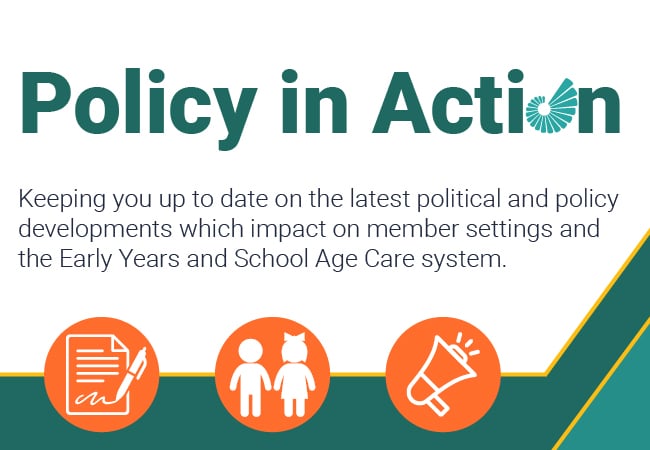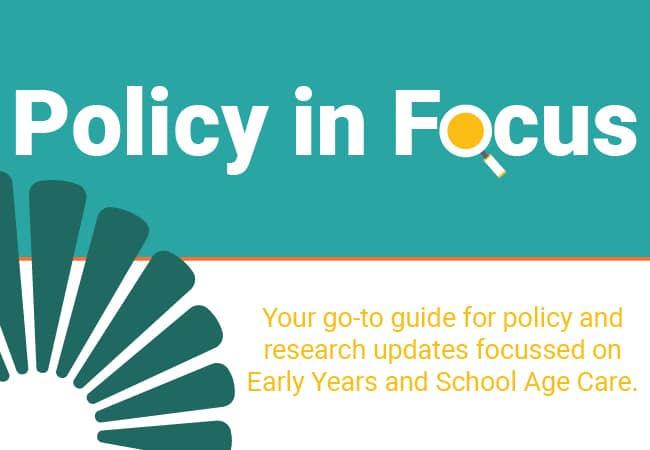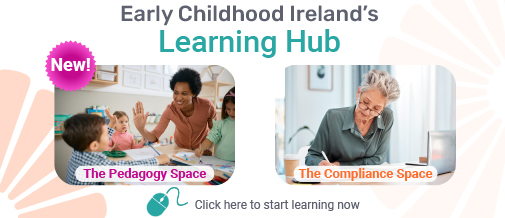Mixed Age Groupings – Pedagogical Approaches!
On June 26, 2016, I wrote a Scéalta blog about “Developing curriculum for children in mixed age groups“, 3 months before the Government introduced the second ECCE Programme year for preschool children. It was the first Scéalta blog Early Childhood Ireland posted. This month Scéalta celebrates its fifth birthday, and you could say children are celebrating five years of the two year free preschool scheme! A lot has changed in five years but my interest in how young children learn from slightly older children and vice versa has not changed. This interest has led me to explore pedagogical approaches in supporting mixed age groupings. While there has been a tendency for most early learning and care settings to group children by age, we know that same age children do not all learn in the same way and at the same time. Mixed age grouping can optimize learning for all children, particularly when activities and the curriculum support the individual interests and needs of each child.
The concept of mixed age grouping in early childhood settings is not new, but how to successfully implement it can be a challenge for educators. The philosophy of developmentally appropriate practice, considering how children develop and learn, respecting the whole child as a competent and competent individual, is at the heart of pedagogy. Pedagogical practice can be thought of as a two-dimensional concept. The first is where educators use their knowledge of child development to identify the range of appropriate behaviours, activities, and materials for a specific age group. The second dimension involves an understanding of individual children’s growth patterns, strengths, interests, and experiences, and how these influence the design of the most appropriate learning environment. When we consider these two dimensions, we are already considering mixed age groupings, and are reflecting on individual child appropriateness and age appropriateness.
Indeed, mixed aged groupings in education has a long history, being rooted in theoretical and philosophical frameworks that support individualised and child-directed learning, which are the cornerstones for mixed age groupings. Mixed age groupings that bring children aged between three to five years together, the age range most commonly found together in ECCE programme rooms, offers unique opportunities for children to learn together. Having at least two years of age difference in any room offers these opportunities too!
For mixed age groupings to work effectively, educators need to offer flexible spaces designed for younger and older children. Intentional spaces to extend learning as well as spaces to practice skills. Providing materials and experiences that cater for various levels provide easy ways for children to work together for example placing playdough or water play close by, can be good places to start. The younger children in the group will benefit from peer support from the older children in accessing, using, and exploring materials and activities. Likewise, the older children will challenge themselves to share understanding about how these materials and activities can be used by the younger children. Giving them the opportunity to develop more sophisticated social skills. Educators can support this peer learning in the environment by watching, listening, and acknowledging children as active participants in what they do and learn.
Other strategies include setting up a ‘buddy system’ where children support other children during routines, allocating an older child to play or work with a younger child. Enabling children to support and lead each other’s learning, establishing processes which encourage children to work positively together. Appoint ‘experts’, which involves nominating children to lead other children in activities such as drawing, painting, or taking care of animals. Sharing their skills can build children’s confidence in sharing their knowledge with the other children. Encourage and establish a culture of nurturing and care between the children, getting the children to look out for and support each other when they encounter difficulties. If a child gets hurt or upset, educators can role model care and ask for another child to assist in caring for the other child.
Take time as educators to reflect and discuss with each other how you can be responsive to each child’s individual strengths and interests. Think about what your shared understandings of the benefits of mixed age groupings are in your setting? What does it mean to be responsive to all children? What strategies have you established to build strong relationships with all children and their families? Why have they worked and what you might do differently?
Communicate with parents right from the beginning about how you manage mixed age groupings, they may have questions about the learning that takes place and perhaps a little anxiety about how the younger child will cope with more mature children.
And finally, I will leave the last few words on mixed age groupings to Peter Gray (2011) who has studied play and children of all ages and I encourage any of you out there who have an interest in non-homogeneous child groupings to review the literature and explore the benefits.
‘Children have more to learn from others who are older or younger than themselves than they do from age-mates. In mixed age play, children scaffold the behaviour of younger one, so that the latter play within their zones of proximal development and thereby stretch their abilities to higher levels. Even when they are not playing directly with older children, younger children in age-mixed environments learn by watching and listening to older ones. Conversely, older children practice nurturance and leadership in interactions with younger ones and learn by teaching, and they are inspired by younger children to engage in activities that build their creativity and capacity for imagination’.
Gray, P., (2011), The Special Value of Children’s Age-Mixed Play, American Journal of Play, volume 3, Number 4.









